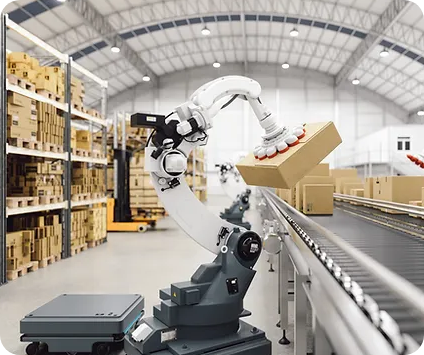
- October 23, 2024
1. Introduction
Experts claim that robotic process automation is an integral norm for the modern business landscape. How will businesses adopt this new technology for their benefit? The following article helps you find the best RPA technologies and tools for desired results in process automation.
The concept of robot-driven process automation has introduced many plausible value advantages for enterprises worldwide. Many organizations have opted for robotic process automation in a bid to resolve the concerns of cost and efficiency in legacy systems. As a matter of fact, Gartner estimates that the expenditure on RPA tools will reach almost $2.4 billion in 2022. Automation through rules-based software bots frees the human workforce from mundane and repetitive tasks. In addition, robotics-based automation opens up the opportunity for many other valuable benefits in enterprise productivity and customer experience. How are enterprises successfully using robotic automation to their advantage? The answer obviously draws your attention to the different technologies and tools in the robotics-based automation landscape.
Businesses that have incorporated robotics-driven process automation in their operations showcase how RPA is more relevant than ever in present times. How do these businesses obtain the best chances of success from robotics-based automation? With a proper selection of robotics-based automation tools and strategic use of technology functionalities, businesses are extracting the best benefits from automation. Let us find the technologies and tools you would need for software robotics or rule-based process automation with bots.
2. What Do You Need in RPA Technologies and Tools?
Imagine that you have decided to go for the robotics automation route to improvise an existing business process. What do you look for in robotics-based automation technology or tool? Well, technologies and tools are an integral part of process automation with robots. Businesses cannot just invest their valuable resources in developing rules-based bots from scratch according to their desired functionalities. Robotics process automation is a vital requirement for digital transformation in the present times, and businesses use tools that can help them save time in process automation. Find more about the basics of robotics process automation with Visvero right now.
You can think of the process as nothing more than programming robots or software applications for executing specific actions. However, RPA technology is evolving gradually with the support of other technologies such as artificial intelligence, machine learning, and natural language processing. On the other hand, you should not confuse these technologies with robotics-based process automation. As a matter of fact, you should focus on the core capabilities of RPA solutions for obtaining the best results. The core capabilities offer an idea of what you should aim to achieve with robotics-based automation tools and technologies. The technologies and tools for robotics-driven automation must facilitate the following functionalities in any automated system.
3. Communication with other systems
- API integration
- Interface to offer flexibility for bot programming
- Decision making
Keep in mind that you don’t need programming skills for using RPA tools across industries of different sizes. Now, it is important to wonder about the possible outcomes organizations can expect with RPA automation to find out how organizations can use process automation. Here are the three different approaches to robotics-driven process automation businesses can pursue with different automation technologies and tools.
Unsupervised Automation: Tools have intelligence aspects alongside decision-making capabilities.
Supervised Automation: Tools that require frequent human intervention for automation qualify for supervised automation.
Hybrid RPA: Tools incorporate the best of the features from supervised and unsupervised automation tools.
You can notice the exact implications of RPA technology and tools for process automation with an overview of their expectations from them. Many companies in different industries such as healthcare, finance, manufacturing, retail, and many others have adopted robotics-based automation successfully. However, the same has not been evident for many other companies.
4. What Are the Best RPA Technologies and Tools?
One of the biggest questions while exploring the prospects of robotics-driven process automation refers to effectiveness of the technology. Will the robotic automation project offer favorable returns on your investments? Robotics-based automation has undoubtedly offered some promising benefits for many companies. On the other hand, many companies have also encountered failures an RPA implementation. The growing complexity of automation processes alongside the lack of awareness regarding robotics-based automation creates profound concerns in deploying automation. At the same time, enterprises undermine the significance of time and cost involved in the robots-based automation projects. However, understanding the RPA meaning in detail and selecting the best tools can support effective implementation of robotics-based automation. Explore how you can derive promising value benefits from robotics-driven process automation with Visvero right now.
As of now, you can find many alternatives among RPA tools for your business process automation requirements. However, you must be careful about choosing tools that can offer comprehensive functionalities for process automation. Let us take a look at some of the top tools for robotics automation and how they can offer better value.
5. What is UiPath?
If you are seeking an all-around robotics-based process automation tool, then UiPath RPA might serve as a credible pick for you. It works as a windows desktop application and features many functionalities which can help in achieving robotics-based automation objectives. You can reduce repetitive tasks alongside ensuring limited human intervention and better scalability.
The three distinct product suites by UiPath offer comprehensive features for efficiency in different automation tasks. Here is an overview of the functionalities in the three different product suites.
UiPath Studio helps in developing automation workflows by leveraging pre-built activities.
The UiPath Robot product suite offers seamless access to a broad assortment of RPA tools and robots for executing the desired workflows.
Finally, the Orchestrator product suite helps in publishing projects alongside facilitating automation workflows for ensuring seamless functioning of automation systems.
Some of the most prominent benefits of UiPath RPA solutions include the flexibility for hosting in cloud environments or virtual terminals. In addition, the tools by UiPath support data management techniques, desktop automation, and scrapping techniques. Furthermore, recorders for desktop apps, terminal emulators, and the Citrix environment enables faster automation.
Most important of all, you can access a centralized repository for managing all the robots concurrently. On top of it, many companies have used the RPA technology by this provider for exceptional benefits. For example, Wells Fargo and Cargill are the two biggest companies using UiPath for their robotics-based automation requirements. The robotics-based automation service provider has expanded into various industries such as healthcare, public sector, and insurance, among others.
6. What is Keysight’s Eggplant?
The Eggplant software by Keysight Technologies is another top entry among crucial tools and technologies for RPA automation, with innovative functionalities. For example, the universal fusion engine of the robotics-based automation platform supports testing for any type of system, including mobile or mainframe systems.
You can use Eggplant for end-to-end automation alongside leveraging the flexibility for hosting on Windows, Linux, and Mac. Another interesting functionality of Eggplant for robotics automation is the ability to interact with different systems for completing the automation process.
The most promising feature in Eggplant refers to the data-centric automation features, which enable integration of data sources for executing tasks associated with each record. In addition, you can move beyond the conventional barriers of the RPA process with the Eggplant Functional product suite. You can use the Eggplant Functional for automation of back-office as well as front-office applications. Furthermore, the robotics process automation tool also offers comprehensive validation and verification features, which can support the overall automation process.
7. What is Blue Prism?
The next addition among the choices of best RPA tools and technologies would bring Blue Prism into the discussion. The UK-based company offers a wide range of robotics-based automation tools for transforming back-office processes. You can explore two distinct components in the offerings by Blue Prism for business process automation.
The Process Studio helps in creating flowcharts with desired control loops, business logic, object calls, and variables.
The second component of Blue Prism, Object Studio, offers a platform for creating visual business objects that can interact with other applications.
One of the biggest advantages of Blue Prism for robotic process automation is the flexibility and speed of implementation. You don’t need any programming or technical knowledge for deploying robotics-based automation solutions in your business workflows. The solutions by Blue Prism help you define a productive end-to-end business automation process schedule.
In addition, Blue Prism also offers a dedicated control room for accessing real-time feedback regarding the status of robots. At the same time, you cannot ignore the multiple interfaces making the use of Blue Prism for robotic automation a lot easier. Above everything else, many notable companies such as IBM, Cognizant, Deloitte, and Accenture have adopted Blue Prism for robotics-based automation.
8. Are You Ready to Choose the Best RPA Tools and Technologies?
The collection of RPA technology solutions and tools in the market can be quite confusing. For example, the UiPath RPA solutions might seem favorable to some, while the solutions by Blue Prism can serve the ideal fit for others. In such cases, you need credible guidance on adoption of robotics-based process automation technologies and tools. Starting with a fundamental overview of robotics-based automation, you need to cover all the implications of the RPA process and its significance. Subsequently, you can develop a solid foundation for understanding how different tools and technologies can help you complete automation. Learn more from professional experts with credible solution providers such as Visvero right here now.



